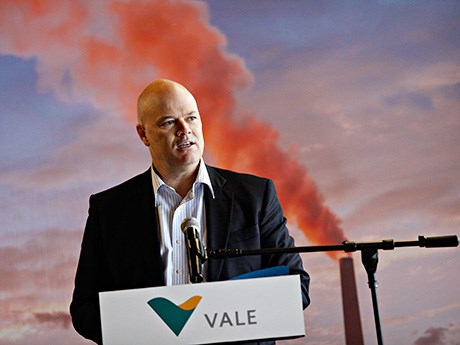Vale’s iconic 1,250-foot (381-metre) Sudbury Superstack will be taken out of service and replaced with two smaller and more efficient 450-foot (137-metre) stacks by 2020.
The company made the announcement during a press briefing January 24th, attributing the decision to the significant reduction of atmospheric emissions from its Copper Cliff smelter.
“We are proud to be reducing emissions to a point where the Superstack is no longer required,” said Stuart Harshaw, vice-president of Vale’s Ontario Operations. “Taking the Superstack out of service is a great symbol of how far Vale has come in terms of shrinking our environmental footprint and making Sudbury a better place to work and live.”
The two smaller and more efficient stacks will require far less energy to operate than the Superstack, reducing greenhouse gas emissions by approximately 40 per cent. At the same time, Vale’s $1 billion Clean AER Project will reduce particulate emissions by 40 per cent and dramatically reduce SO2 emissions by 85 per cent.
By changing to two smaller and more efficient stacks, natural gas consumption is estimated to drop by nearly half, from 94 million cubic metres to 48 million cubic metres per year. The savings are equivalent to the average fuel consumption of approximately 17,500 homes, or approximately one-third of all the households in Sudbury.
Construction of the two new stacks will begin in early 2017 and will take approximately two years to complete. The Superstack will be placed in care and maintenance mode in the second quarter of 2020 at which time the steel liner will be removed to mitigate anticipated corrosion. A study will then be conducted to determine the best way to safely and carefully take down the Superstack’s concrete shell.
The Superstack was built by Inco in 1970 for $25 million and is the second tallest freestanding structure in Canada behind the CN Tower in Toronto.


